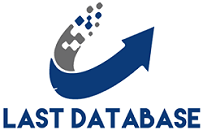The Fundamentals of Applications
At its core, an application is a software program designed to help users accomplish a specific task or set of tasks. Applications can range from simple, single-function tools to complex, feature-rich programs Lebanon Phone Number that encompass numerous capabilities.
Some common examples of applications include:
Productivity apps like word processors, spreadsheets, and presentation software
Communication apps for email, messaging, video conferencing, and social media
Entertainment apps for streaming media, playing games, and listening to music
Utility apps for file management, system optimization, and security
Mobile apps that run on smartphones and tablets
Enterprise applications used by businesses for tasks like customer relationship management, accounting, and inventory management
Regardless of their specific purpose, all applications share a few fundamental characteristics:

Interaction with the Operating System: Applications do not operate in isolation - they rely on the underlying operating system (OS) of a device to provide access to hardware resources, system services, and user interface elements.
User Interface: Most applications feature a graphical user interface (GUI) that allows users to interact with the program's functionality through menus, buttons, windows, and other visual components.
Executable Code: At their core, applications are composed of executable code - the set of instructions that tells the computer how to perform the application's desired tasks.
Data Storage and Manipulation: Applications often require the ability to read, write, and manage various types of data, ranging from user-generated content to system configurations and settings.
The Evolution of Applications
The concept of applications has evolved significantly over the years, driven by advancements in hardware, software, and network technologies. In the early days of computing, applications were primarily standalone programs installed directly on a user's local device, with limited interoperability and data sharing capabilities.
However, the rise of the internet, cloud computing, and mobile devices has transformed the application landscape. Today, many applications are designed to be accessed and used through web browsers or mobile app stores, offering cross-platform compatibility and cloud-based storage and synchronization.
Additionally, the growing prominence of software-as-a-service (SaaS) models has led to the development of web-based applications that users can access and utilize through a subscription or pay-as-you-go basis, without the need for local installation or maintenance.


